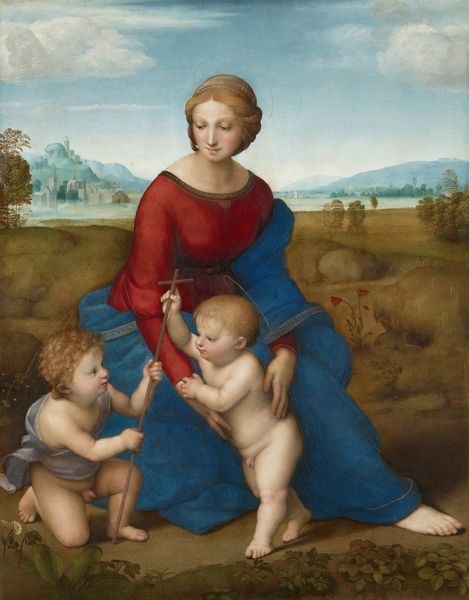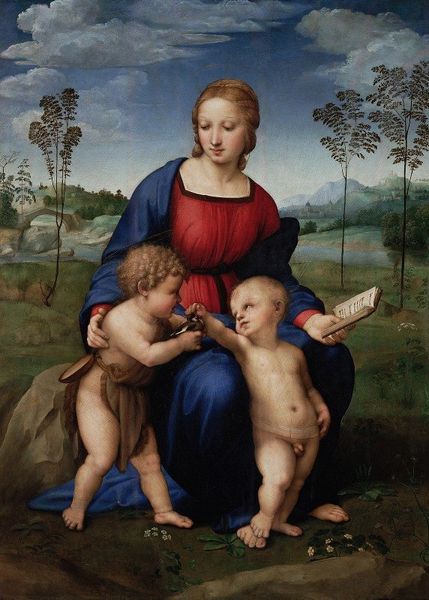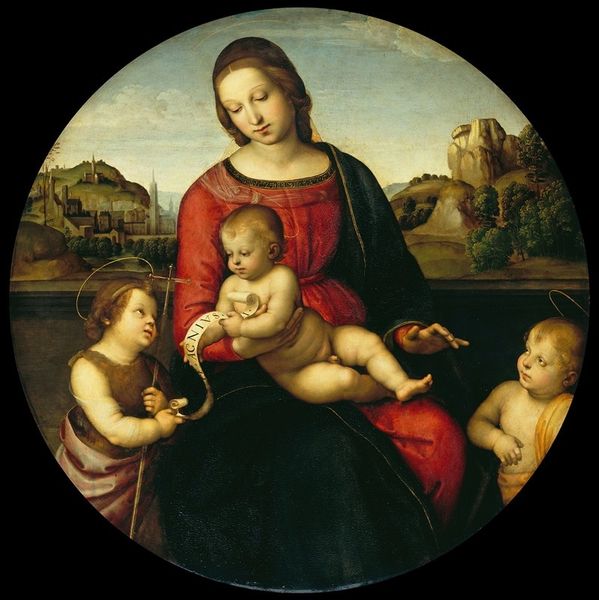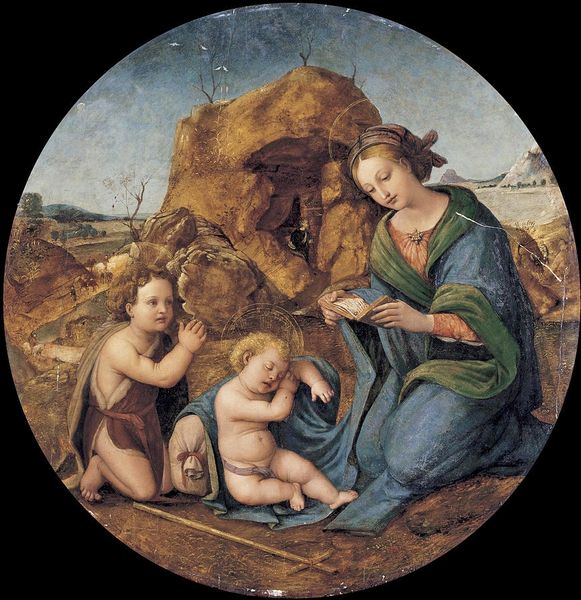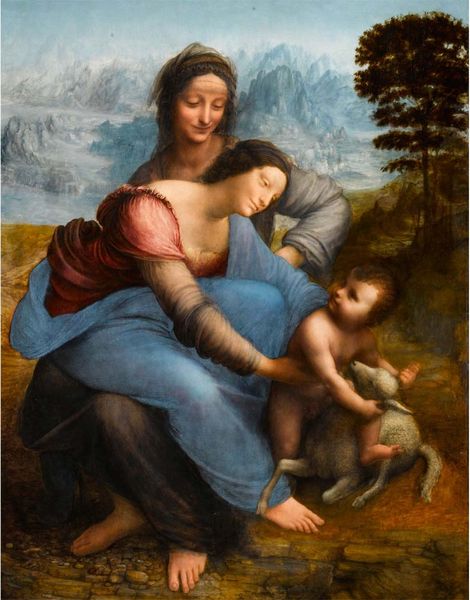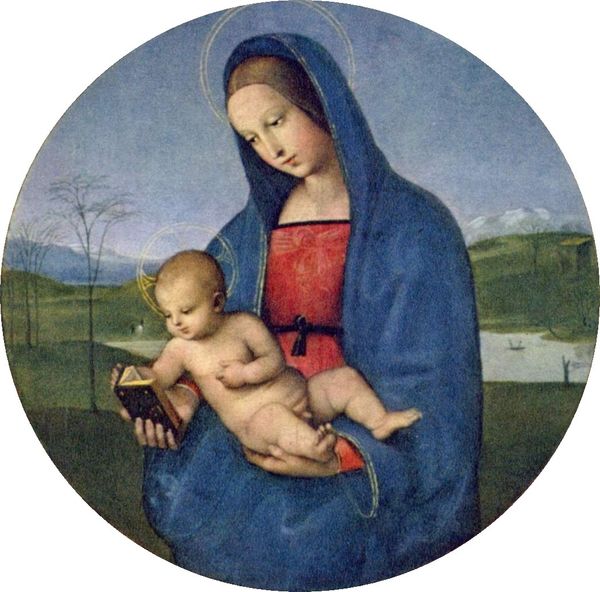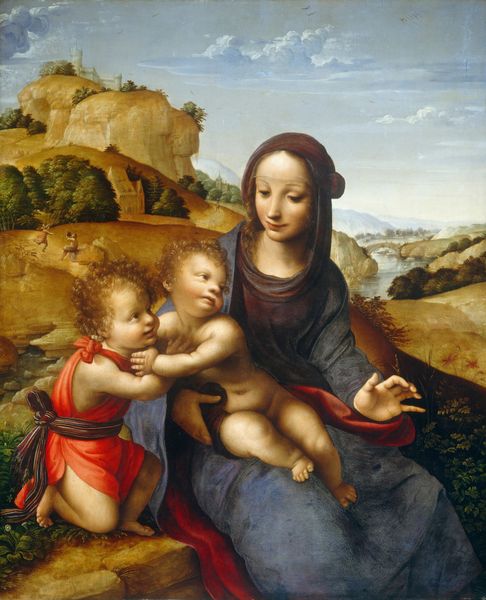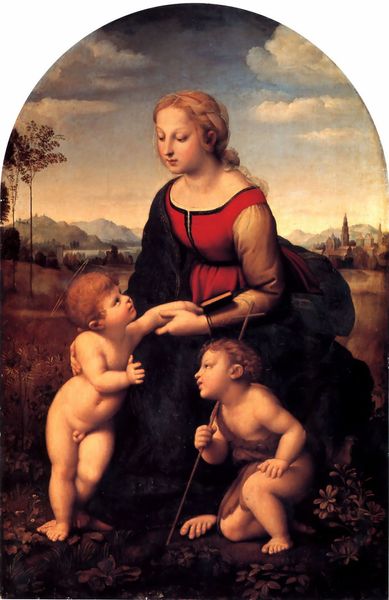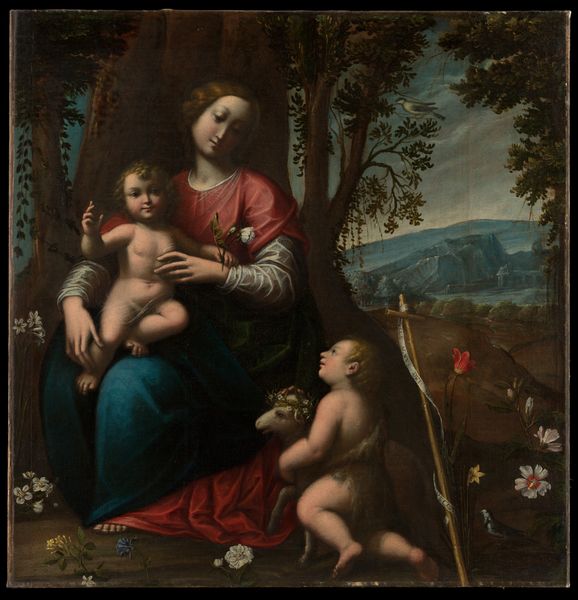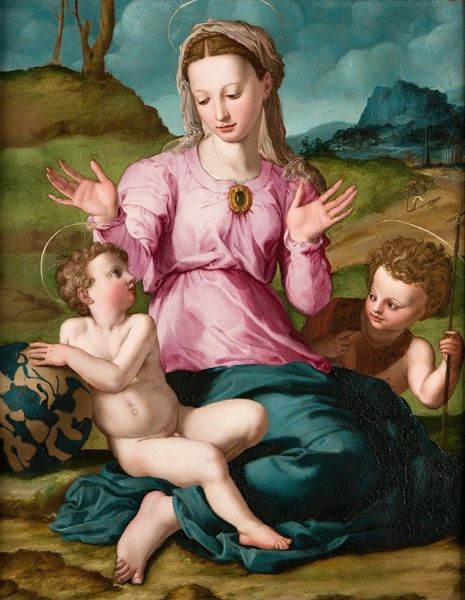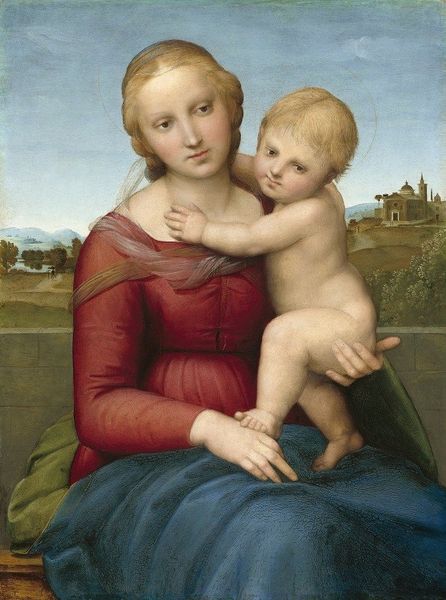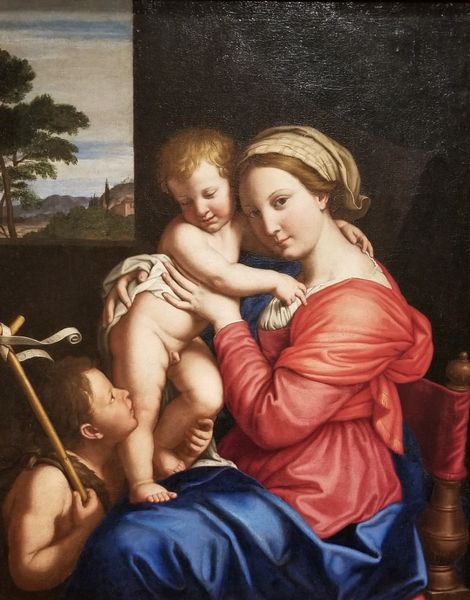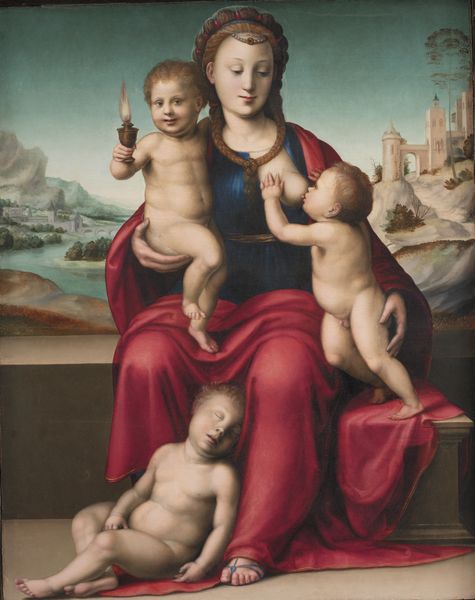
painting, oil-paint
#
portrait
#
high-renaissance
#
painting
#
oil-paint
#
landscape
#
figuration
#
history-painting
#
italian-renaissance
Copyright: Public Domain: Artvee
The Italian painter and architect Raphael has been called the ‘prince of painters’. Alongside the older artists Leonardo (1452-1519) and Michelangelo (1475-1564), he is known as a primary figure in the High Renaissance. Why is his work so celebrated? What makes Raphael stand out? 👇 Raphael painted ‘The Alba Madonna’ around 1510, using oil paint on a tondo (circular) wood panel. The sphere panel suggests divine infinity, as circular forms were closely associated with spirituality. Raphael incorporated heavenly meanings into every aspect of this work, including its very shape! The shape of the wood panel is complimented throughout the painting, as seen in the curved forms of Mary’s turban as well as the gentle hills in the background landscape. 🗻 The painting depicts three figures. The Madonna sits serenely with two children: Christ, and John the Baptist – who clutches a wooden crucifix. All three figures look towards the cross, drawing our attention to it. The cross acts as a clear reminder of what is destined to come in the biblical life of Jesus. Raphael has designed this composition to communicate balance and stability. He uses a pyramidal composition, inspired by Leonardo. Notice how the figures are arranged in a triangular form to create a sense of harmony! As well as drawing inspiration from his fellow Renaissance masters, Raphael studied a variety of classical influences for this painting. This is especially evident in the drapery and sandals worn by the Madonna, both of which are reminiscent of ancient sculpture. Zoom into the foreground of the painting. Do the plants seem out of place to you? Raphael specially selected these varieties of flower to build meanings for the viewer. He has included Lady’s Bedstraw, a plant commonly used to ease pain in childbirth, as a reference to Mary’s maternal role. He has also painted cyclamen to indicate love and violets to indicate humility. This is a prime example of symbolism in Renaissance art. 🌸 Editor: Lucy Jude Grantham
Comments
No comments
Be the first to comment and join the conversation on the ultimate creative platform.
